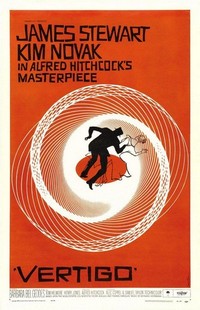
Vertigo (1958)
De Vrouw Die Tweemaal Leefde

Raiting: ![]() 8,4 /10
8,4 /10
Genre: Thriller
Director: Alfred Hitchcock
Stars: James Stewart, Kim Novak and Barbara Bel Geddes
Country: United States
Release date: 28 May 1958
Length: 129 minutes


Raiting: ![]() 8,4 /10
8,4 /10
Genre: Thriller
Director: Alfred Hitchcock
Stars: James Stewart, Kim Novak and Barbara Bel Geddes
Country: United States
Release date: 28 May 1958
Length: 129 minutes